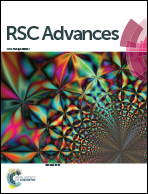The effect of Rashba spin–orbit coupling on the spin- and valley-dependent electronic heat capacity of silicene
Abstract
Through restructuring of the electronic spectrum of two-dimensional massive fermions in buckled silicene under an applied electric field and induced exchange field, we have studied how Rashba spin–orbit coupling enhances the electronic band structure and electronic heat capacity of the system. Special attention was given to investigate the spin- and valley-dependent electronic heat capacity. By variation of the electric field, system transitions occurred from the topological insulator phase to the band insulator phase. The Kane–Mele Hamiltonian model and the Green’s function technique were used in this work. The first remarkable point is the unchanged (changed) subband gap size (effective mass of fermions) with Rashba coupling for all phases. We have found a critical Dirac-like point which affects the effective mass of the carriers in the band insulator phase. And finally, we found that variation in the Hall conductivity with Rashba coupling leads to quantized Hall conductivity, which was the main result of the current study: a new quantum anomalous Hall effect at large Rashba coupling strengths. The presented methodology may be extended to other two-dimensional materials, like germanene and stanene.



 Please wait while we load your content...
Please wait while we load your content...